Table of Contents[Hide][Show]
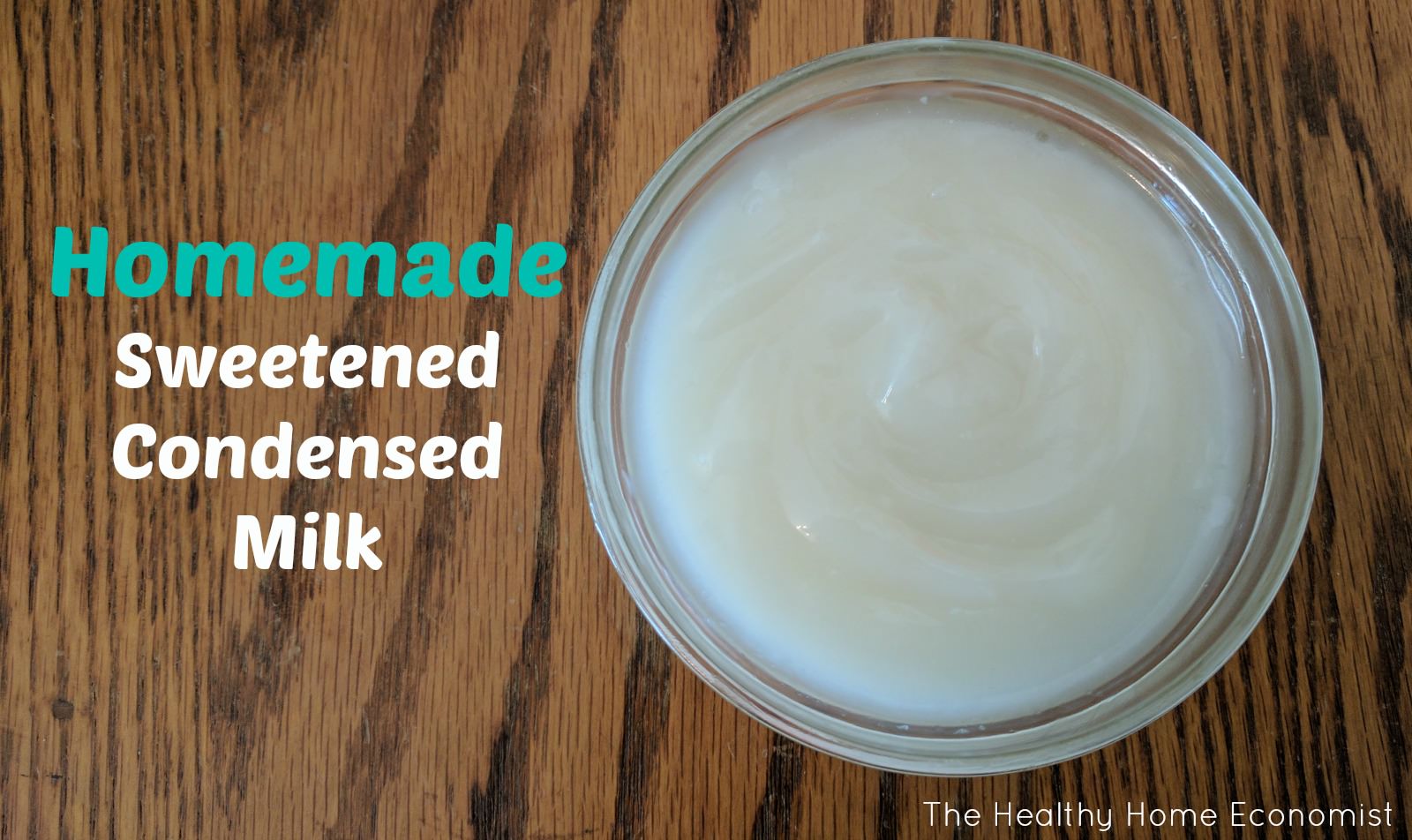
There is absolutely nothing healthy or beneficial about sweetened condensed milk. Sadly, this is true even if it is made from grass-fed organic milk. Watch out for the many recipes and videos on how to make sweetened condensed milk at home. Without exception, these methods are best avoided.
Here are the unsolvable problems with this heavily processed food:
Strike #1: Lengthy heating time is necessary to reduce the milk down to a condensed state. This totally and thoroughly denatures the fragile milk proteins. Denatured milk proteins do not digest well and are allergenic. Even those with a healthy gut suffer damage to intestinal balance. The enzymes produced by the body to perform the task no longer fit together properly with the altered milk protein molecules.
Any of these undigested food molecules are prime goodies for any pathogens in the gut. There are always at least some (about 20% in a healthy gut). These unfriendly microbes are more than happy to take over control from your friendly and beneficial bacteria friends if given the chance.
Strike #2 is the large amount of refined white sugar that is typically used to sweeten the final product.
Even if you make the considerable effort to make your own sweetened condensed milk at home with unrefined sweeteners, the very serious digestive problem with the denatured milk proteins still exists. I find that eating anything made with sweetened condensed milk is asking for a stuffed up nose. How? This overly processed food is so incredibly mucous forming.
Strike #3. You’re outta here!
No wonder Dr. Weston A. Price derided sweetened condensed milk as one of three primary “displacing foods of modern commerce” in his seminal work Nutrition and Physical Degeneration.
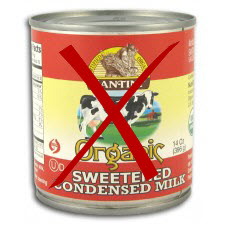
Have we really struck out with sweetened condensed milk for good? It is so delicious, so decadent. There simply has to be a way to make this stuff healthy!
Hmmm. How about this for an idea?
Whole coconut milk serves as a wonderful substitute for milk in many recipes, does it not?
Solution: Make healthy sweetened condensed milk with coconut milk
Coconut milk has very little protein (less than a single gram in a can of whole coconut milk) so the denaturing problem is no longer an issue like it is with dairy milk. In addition, making a healthy sweetened condensed milk with coconut milk affords you the freedom to choose a whole, unrefined sweetener instead of white sugar and the natural sweetness of coconut milk permits less sweetener to be used!
So bring on those recipes using sweetened condensed milk! You will love the taste of this sweetened condensed milk recipe and how you don’t feel tired and congested after eating it!
One Word of Caution
In my experience, substituting sweetened condensed coconut milk for dairy sweetened condensed milk at a 1:1 ratio does not appreciably change the flavor of the recipe. However, it will probably extend the baking time a bit. For example, most key lime pie recipes say to bake at 350F for only 15 minutes if using canned sweetened condensed milk. But, if you use sweetened condensed coconut milk, I’ve found that 30 minutes at 350F is required for the pie to fully bake. As a result, be prepared to adjust your recipes with regard to baking time when using sweetened condensed coconut milk.
Note: If you prefer, brands of dairy-free sweetened condensed milk are available for purchase! This is the brand of organic sweetened condensed milk I now use and recommend. It saves a load of time if you prefer not to make it yourself.
Homemade Sweetened Condensed Milk
Note that the healthy sweetened condensed milk recipe below freezes nicely. This allows you to make it ahead for holidays and special occasions to have on hand as needed. Very convenient!
I’ve included a brief 15-second video of the sweetened condensed milk recipe being made. I chose sucanat as the sweetener which is why it turned out dark. This wholesome sugar is mixed with some egg yolks as I make my family’s favorite key lime pie recipe. Notice the mineral-rich color and consistency of the end result.
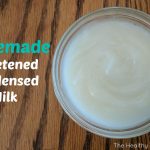
Healthy Sweetened Condensed Milk Recipe
Easy non-dairy sweetened condensed milk recipe that is perfect for all your dessert-making needs in place of commercial brands.
Ingredients
- 4 cups whole coconut milk preferably organic with no additives
- 2/3 cup evaporated cane sugar preferably organic
Instructions
-
Bring whole coconut milk to a boil in a medium sized pan.
-
When the coconut milk starts to bubble, reduce the heat to a simmer and whisk in your sweetener, mixing thoroughly.
-
Continue to simmer for about 2 hours until the liquid is reduced by at least half or as much as two-thirds. You can be doing other things around the house and check and stir occasionally as it is reducing down.
-
This sweetened condensed milk recipe is thickened once you reduce it down. Have a taste .. you will be amazed! If you used sucanat or coconut sugar, it will be quite dark as shown in the picture.
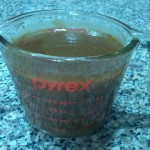
-
Allow to cool and use this sweetened condensed milk recipe in any of your favorite desserts. Refrigerate the unused portion. It will keep for several days.
Recipe Video
Recipe Notes
Coconut sugar or sucanat may be substituted for evaporated cane sugar. Only do this if a richly flavored sweetened condensed milk will not alter the recipe that it will be used in.
Feel free to use homemade coconut milk instead of canned if you prefer.
I don't recommend coconut milk in cartons as it is watered down.


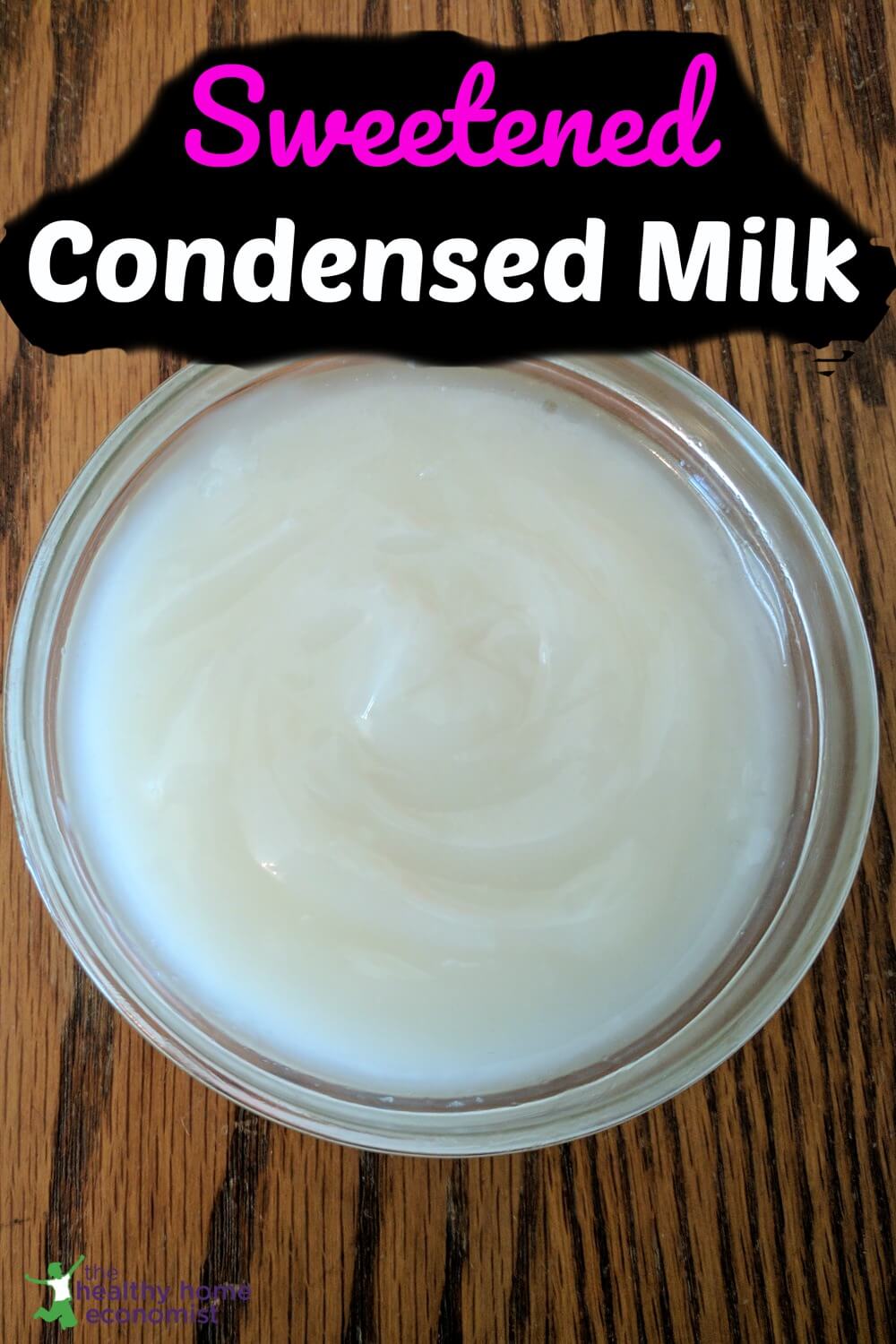






Thanks for the tip! I cannot eat dairy and my favorite key lime pie recipe calls for sweetened condensed milk…
Does this end up tasting like coconut? My family does not like the flavor of coconut at all, so I’d be hesitant to invest the money and time to make this and have them not like it.
I made key lime pie with the batch I made in the video and it tastes exactly the same as key lime pie made with the nasty canned sweetened condensed milk.
Hey Sarah! Have you used ricemellow creme? I just ordered some. What is your opinion on it? Thanks!
I looked at the ingredients of the ricemellow creme, and as it’s got soy protein I don’t think it would be recommended. (I mean, it looks better than the alternatives, I guess… but I do wonder whether there would be a way you could make your own marshmallow at home that would have better ingredients).
Never tried it or looked at the ingredients of that particular product. I make my own marshmallow and it is really easy .. you just need plain unflavored gelatin. Here’s my recipe https://www.thehealthyhomeeconomist.com/homemade-easter-peeps/
I saw that junk in the store and thought about picking it up and immediately put it back down. I knew even though it said “organic” it still can’t be good for you.
I was just wondering about this while watching a cooking segment on the news
When I was a baby I grew too chubby on formula, so my pediatrician told my parents to feed me fat free condensed milk. This article explains a lot of the health problems I had as a baby and toddler. (I’m allergic to dairy, even raw, grassfed, jersey cow dairy, so I imagine that doesn’t help either).
Do you mean fat free evaporated milk?
This looks great! Would rapadura work? I’m excited to try this but I just bought rapadura (over sucanat) because I read in Nourishing Traditions that sucanat “should be avoided.” I’m still very new in the Real Food movement and would love anyone’s thoughts on this.
Yes, rapadura is the brand name for sucanat. Same thing :)) At the time Nourishing Traditions was written, sucanat was actually a processed sweetener but it is now basically the same thing as rapadura. Not sure what happened there to facilitate that change, but apparently sucanat got healthy!
Thanks for the clarification! 🙂
The reason that Weston Price did not like sweetened condensed milk was because it contains few vitamins and a lot of calories. He showed in ‘Nutrition and Physical Degeneration’ how one would have to eat thousands of calories worth of certain foods (jam on white bread and maple syrup on pancakes were the specific examples he used) to get the same amount of phosphorus that could be found in a small amount of lentils. I do not believe he knew about proteins becoming denatured with heat, although he does mention the denaturing of food in general. He literally means that a high calorie food with minimal vitamins, like your key lime pie would displace another more nutritious food in the diet, like cheese and caviar for dessert. This is not a criticism btw. Just a clarification. I do like the idea though and thank you for the recipe. There are times when Mums have to compromise so their children can ‘fit in’ at school. Unfortunately in Australia baked slices with condensed milk are very popular fare for children. I may make this condensed milk one day as a better alternative to the tinned stuff and I will think of you. An interesting side note- a person I know that has travelled extensively in Saudi Arabia tells me that the traditional people in the desert boil/heat camel’s milk and condense it. The milk is apparently very sweet already and this makes it sweeter. I am not sure how far this practice dates but the foods of traditional societies fascinate me. Maybe camels milk has different properties or maybe this is a new practice for them introduced in the last 50 years or so? Maybe it is traditional but not healthful? I am guessing not all traditional societies had good health.
Yes, the fact that sweetened condensed milk is devoid of nutrition was certainly one reason Dr. Price advocated to avoid it.
Would the creamy part of canned coconut milk work as well as a condensed milk substitute if you added a healthy sweetener, rather than boiling down the whole contents of the can?
You have to boil it down. It’s not thick enough otherwise and won’t work well as a sub for canned sweetened condensed milk.
Would raw honey work instead? (Yes I realize it would no longer be raw with the heating.) How much would you use?
Thanks!
Jill
I don’t like to cook with honey as a general rule. If you need to use a GAPS sweetener, I would use date syrup. Date sugar won’t work here as it doesn’t dissolve well enough.
Can you explain why you don’t like to cook with honey? Is it becuz you kill nutrients by heating or some other reason?
The practical reason why I don’t prefer to cook with honey is because good quality raw honey is very expensive and there are other whole sweeteners that do the job great that are more cost effective.
The second reason is not proven by science (at least not yet to my knowledge) but it is a warning from the Ayurvedic tradition from India. Ayurveda teaches that heating honey makes it toxic. Now, I wouldn’t go so far as to agree with that 100%, but if a traditional society warned against cooking with honey, that is pretty good reason to not do it. If you are going to use it once in awhile, no worries. I don’t think that would be a problem but if you can avoid it, probably best to do so.
That is absurd. The Middle East used to cook almost exclusively with honey or dates. Look at any of their pastries. I understand that this also used to be the primary sweetener in Europe. I understand that cooked honey has way less benefits than raw, but it makes no sense to consider it toxic.
Heating honey never makes it toxic…you are mistaken!
Heating honey does indeed make it toxic. Feeding heated honey to the bees that made it kills them among other data points. https://www.thehealthyhomeeconomist.com/is-cooking-honey-unhealthy/
Coconut sugar is GAPS legal?? It’s mostly comprised of sucrose, which is a disaccharide…unless I’m mistaken…